2010 Yamaha FX Cruiser SHO/FX SHO Review
The industry's best-selling luxury model
The year 2009 wasn’t a great one for the personal watercraft industry. Sales were down, and of the units that did move out the door, low-priced introductory models dominated. Of the few non-intro boats that snuck their way into the Top 10, most were carryover models from 2008.
One notable exception? The Yamaha FX SHO Cruiser. Let’s take a look at the market’s best-selling luxury machine.
Cool Tech
It was Yamaha that introduced us to electronic throttle two seasons back, and the features that it makes possible. Cruise control is probably the biggest draw. Yamaha’s Cruise Assist enables the driver to lock in any speed with the push of a button, and then simply squeeze the throttle to maintain it. Speed doesn’t fluctuate, your trigger finger doesn’t grow weary on extended rides, and tasks like towing become far more enjoyable for the parties at both ends of the towrope.
 Yamaha’s Cruise Assist is a welcome feature on the FX SHO.
Yamaha’s Cruise Assist is a welcome feature on the FX SHO.Release the throttle and the system disengages, returning control to the driver. Fine-tuning the speed is a matter of bumping up/down arrows on the handlebar; you can increase or decrease speed roughly five miles an hour up and down from your set cruising speed.
A twist on the cruise-control theme is No Wake Mode. This feature allowed me to push a button in those long no-wake zones, and then simply steer as the boat settles in at a nice 5 mph cruise. No pressure on the throttle is required. It’s a nice convenience, especially if you live with no-wake zones on a regular basis.
A further techno-infusion can be found in Yamaha’s hull makeup. By using nanotechnology — tinkering with matter on a molecular scale — the manufacturer was able to noticeably lighten its hull, while actually gaining strength. Sheet Molding Compound (SMC) is still the material of choice, but a different filler material in the mix allowed engineers to use less filler, and create a different kind of bond between the particles. The end result is a light, strong material that shaves about 25-percent of the weight off the previous hull.
Big Displacement
That weight advantage is fully exploited by the largest displacement engine in the industry, a 1.8-liter, inline four cylinder that employs a supercharger and intercooler to pack an explosive punch out of the hole. No, it’s not the beast on paper that the Kawasaki Ultra 260X or Sea-Doo RXT-X 260 may appear to be (estimates put the true horsepower in the 210hp range), but on the water the results are on par with the leaders. I edged over 67 mph in straight-line drag runs, and noted a 0-30mph acceleration time just beyond the 2.0-second mark.
Handling is impressive, but as in previous years the boat’s personality takes a short time to get used to
Rough-water tracking is typical Yamaha, with an exacting presence that simply mows its way over the waves without any quirks. The FX SHO is predictable and solid, maybe throwing a jar or two the driver’s way when really pounding over the waves, but never proving unpredictable. Cornering ability is top notch, but be prepared for a small quirk. It feels almost like a slight roll along the boat’s lengthwise axis, as the boat hooks up aggressively, then seems to briefly release. Control is never affected; it’s simply a slight rocking that takes a few passes to get used to. Pre-NanoXCel models didn’t seem to exhibit the same tendency, so I almost wonder if it’s just the lighter weight hull now sitting higher atop the water.
In The Details
Yamaha continues to use a manual trim system to drop the jet nozzle, allowing the pilot to drop the bow in the corners or trim up for speed. It’s got pluses and minuses. The plus is that it’s a manual system that doesn’t require the driver keep track of a gauge. The minus is that a manual trim can be difficult to move when so much thrust is moving through the pump at high speeds.
Yamaha continues to feature a starboard-located reverse handle. Personally I think even Yamaha execs would rather have the handle on the left hand side of the cowl, but it remains on the right, where those legal types say it prevents a driver from employing reverse while also using the throttle. Like so many other boats that use this setup, we say let adults be responsible for their safety, and make it easier to maneuver around the dock by allowing the control of both throttle and reverse positioning simultaneously.
Nice extras include a flip-down boarding step for deep water boarding, a car-like remote that can disable the craft for security or be used to put it into a novice-friendly, or gas-saving low RPM mode, and adjustable handlebar tilt to dial in the ergonomics to fit the rider. Storage is divided between a front bow tub, deep glovebox with cupholders, and a watertight, canister-like compartment on the steering console.
I continue to applaud Yamaha for designing its engines to run to their full potential on 87-octane pump gas.
Let’s Cruise
So what have we overlooked? What makes the boat a cruiser by definition — the plush, bolstered touring seat that offers tremendous lower-back support and allows drivers to kick back in comfort on long rides. Yamaha notes the boat has a three-point contact system for drivers. The seat, foot chocks, and handlebars all combine to increase the driver’s comfort. I know a few hardcore cruisers and they love the laid-back style. The cruiser package also means you get a fuel-flow meter to help plan fuel stops on long trips.
The FX SHO is also offered in a non-cruiser model, without the seat and fuel-flow package. It’s essentially the same, save for different color packages. The Cruiser is featured in either a dark blue or platinum metallic; the sportier-minded FX SHO is offered in black or red metallics.
Yamaha has increased prices for 2010, bumping up the price of the Cruiser to $13,799 and the non-Cruiser FX SHO to $13,099. That’s a $600 increase on both models. But then again, when you’ve got a consumer favorite, that kind of increase is easier to sell.
| Yamaha FX Cruiser SHO/FX SHO Specs | |
| Length | 132.7 inches |
| Beam | 48.4 inches |
| Dry Weight | 841/827 lbs |
| Engine | Four-cylinder DOHC EFI |
| Displacement | 1,812 cc |
| Bore and Stroke | 86mm x 78mm |
| Compression Ratio | 8.6:1 |
| Rated Horsepower | N/A |
| Fuel Capacity | 18.5 gal. |
| Combined Stowage Capacity | 26.3 gal. |
| Colors | Crimson Red Metallic, Bronze Metallic (Cruiser); Dark Blue Metallic; Platinum Metallic (SHO) |
| Price | $13,799/$13,099 |
Related Reading
2009 Yamaha FX SHO/FX Cruiser SHO Review
2009 Yamaha FZS Review
2009 Yamaha FX HO/FX Cruiser HO Review
2010 Yamaha WaveRunner Lineup Preview
Get PersonalWatercraft.com in your Inbox!
Like PersonalWatercraft.com on Facebook
Comments
Most Popular

2025 Yamaha JetBlaster PRO 2-Up Review

2024 Kawasaki Jet Ski STX 160X Review

Remembering the Sea-Doo XP

Whatever Happened to the Wetbike?

2025 Yamaha JetBlaster Review

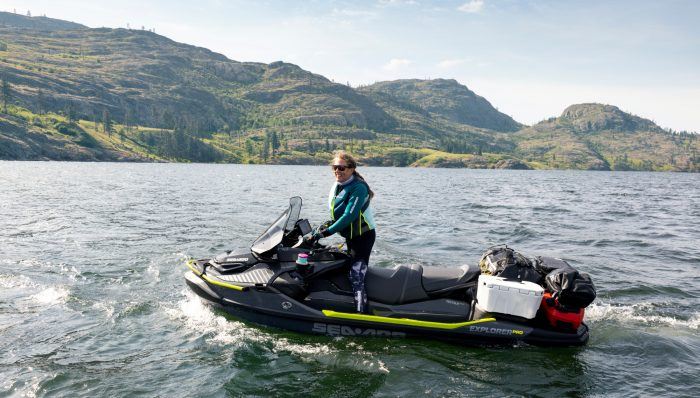
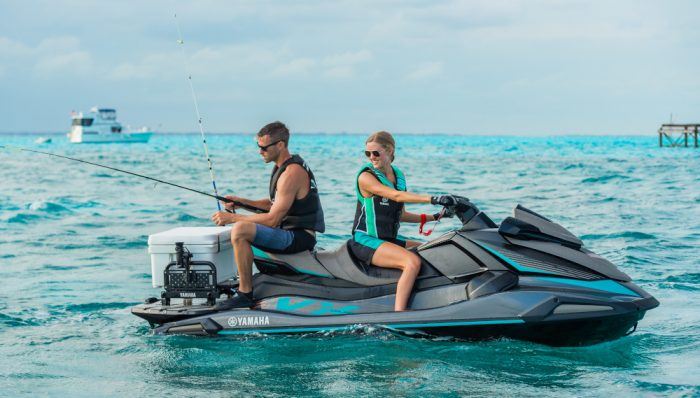
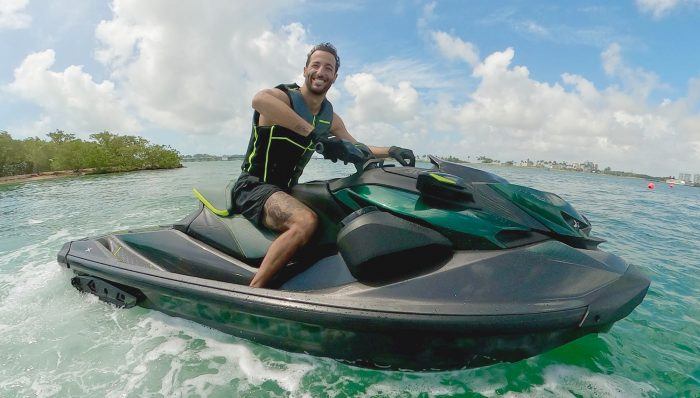







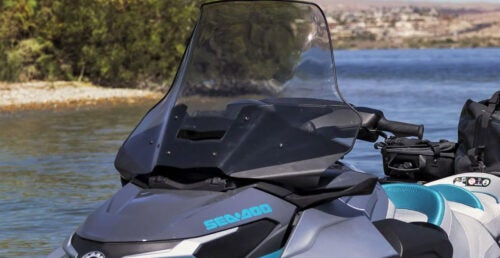
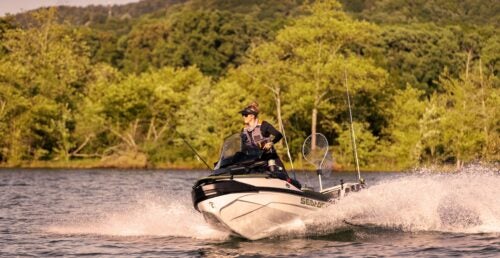


 Your Privacy Choices
Your Privacy Choices